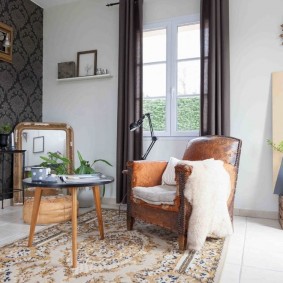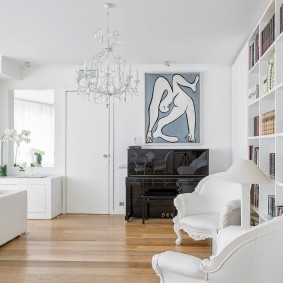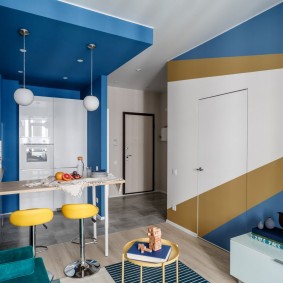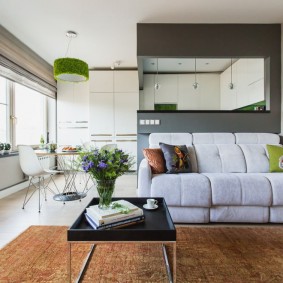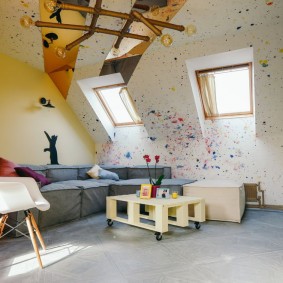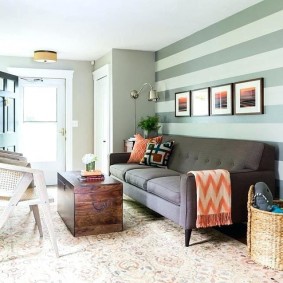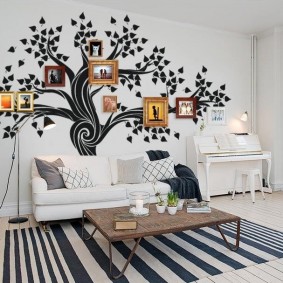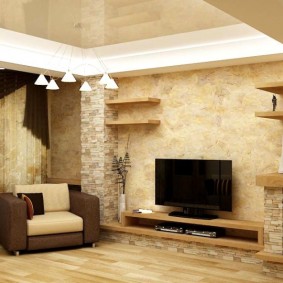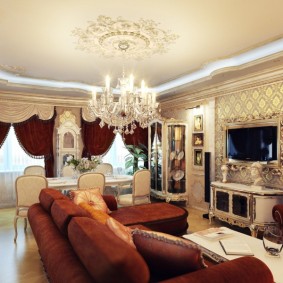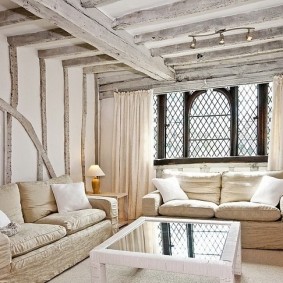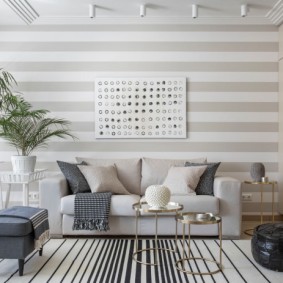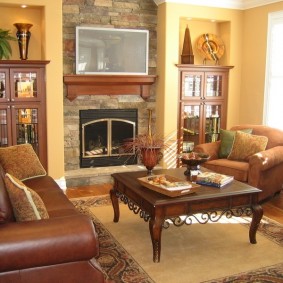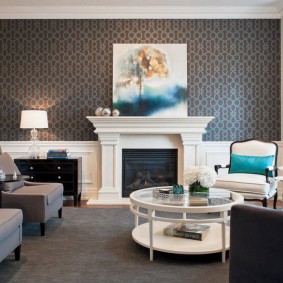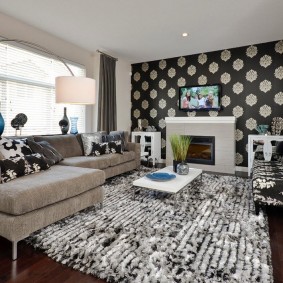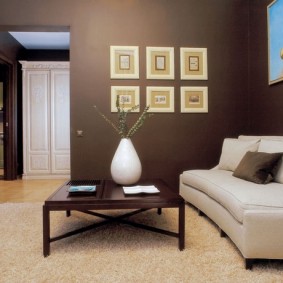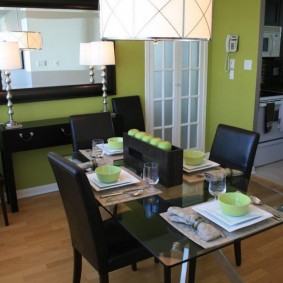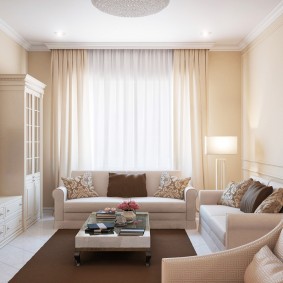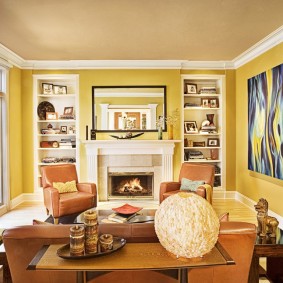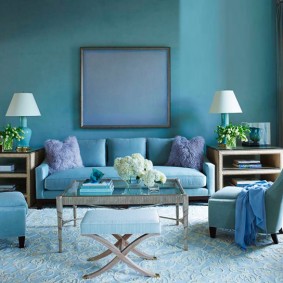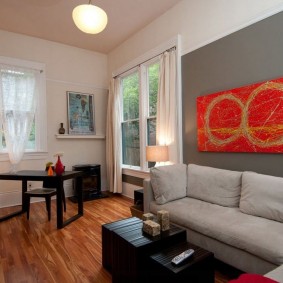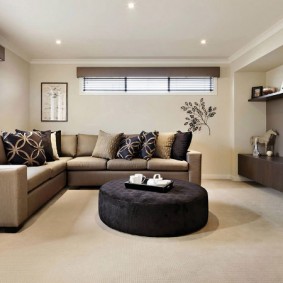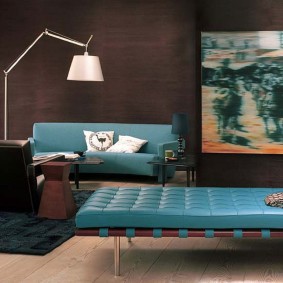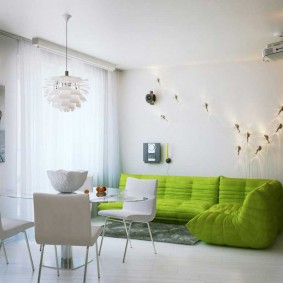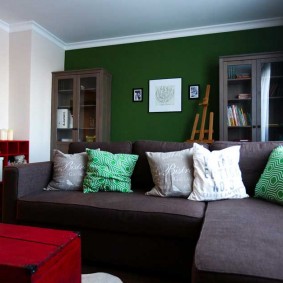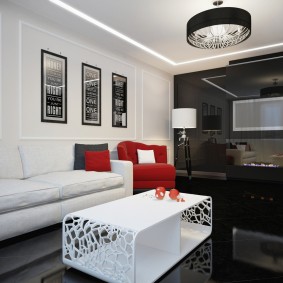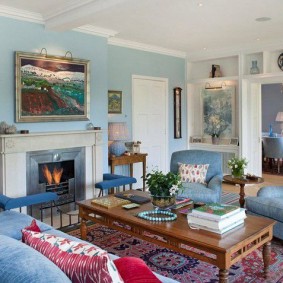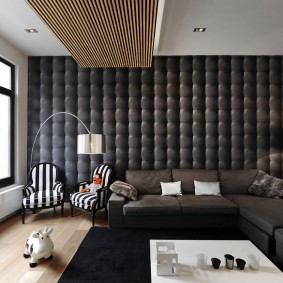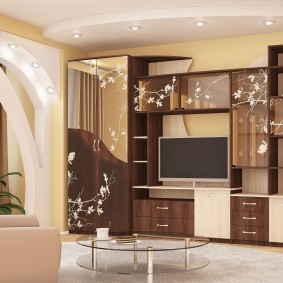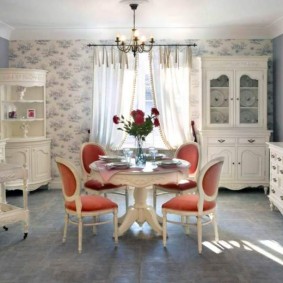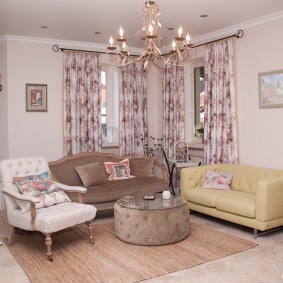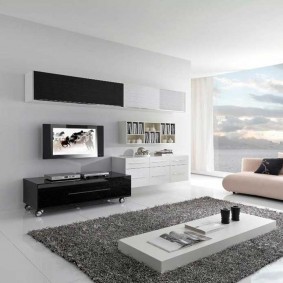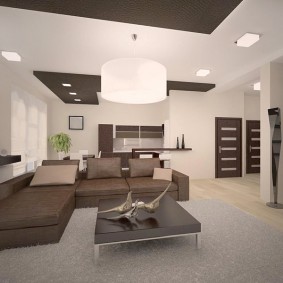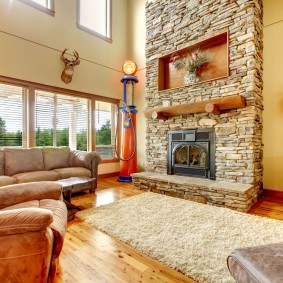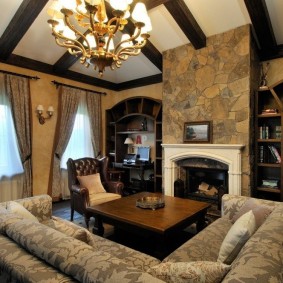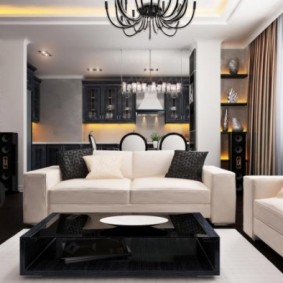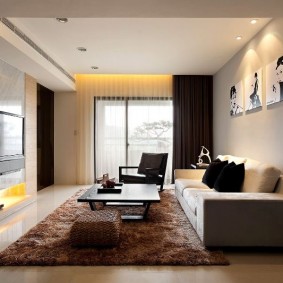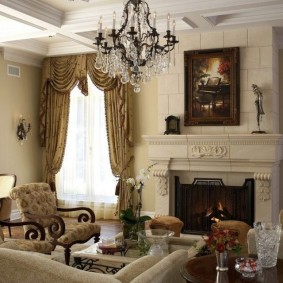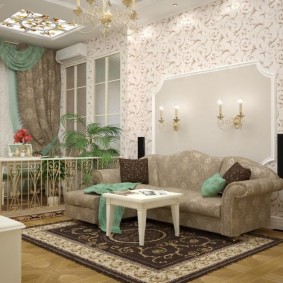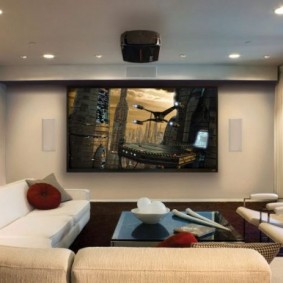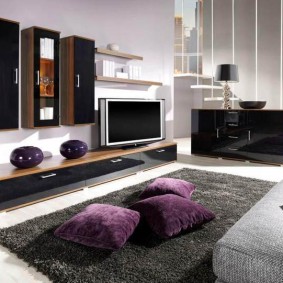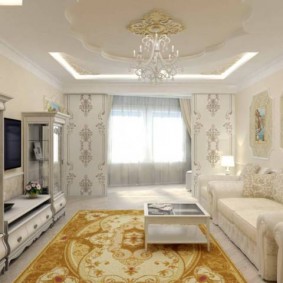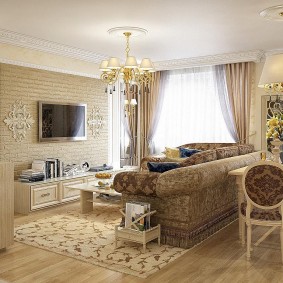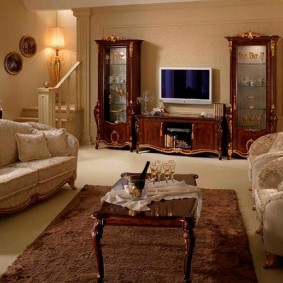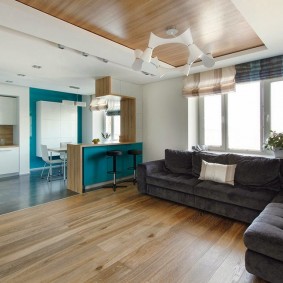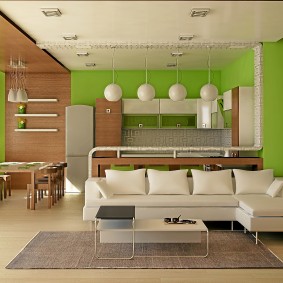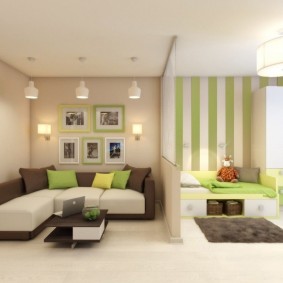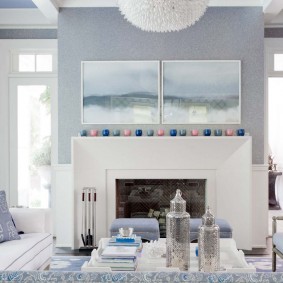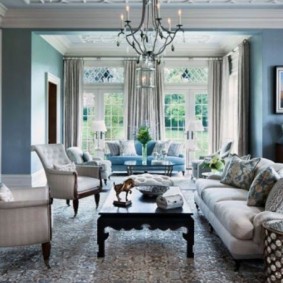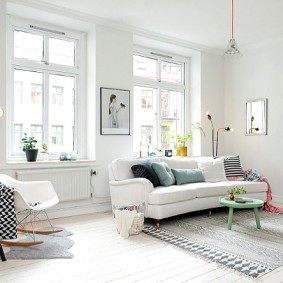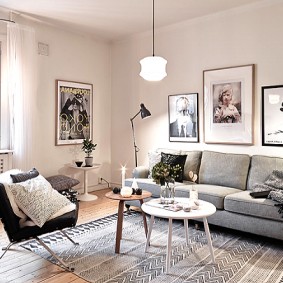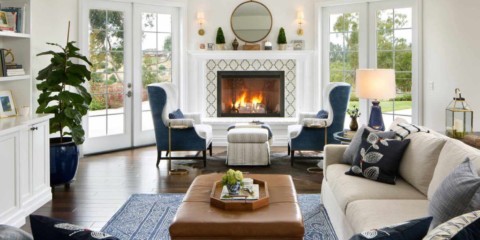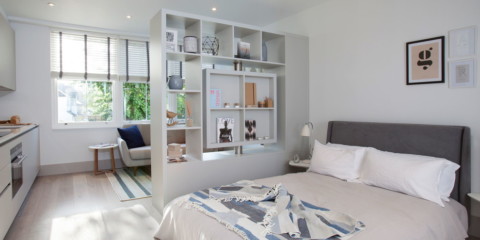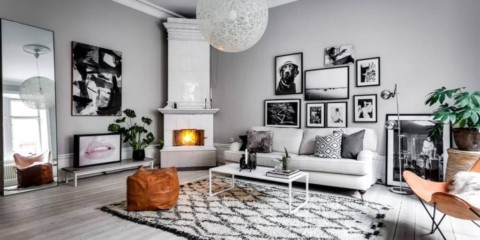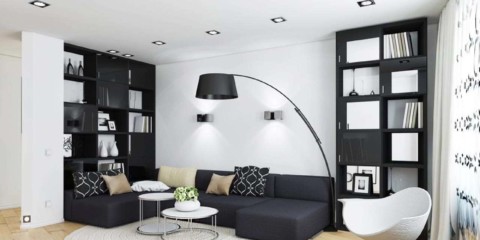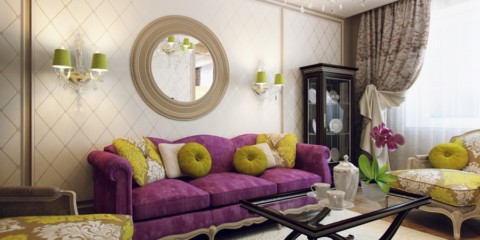 Living room
Rules for decoration and decor of the living room
Living room
Rules for decoration and decor of the living room
When deciding on the choice of color for the walls of the hall, it is necessary to observe some rules and take into account important nuances. Following the recommendations allows you to recreate a harmonious and attractive interior of the room. But before deciding on the style and color, you need to familiarize yourself with the types of paints, its texture, functional features and operational properties.
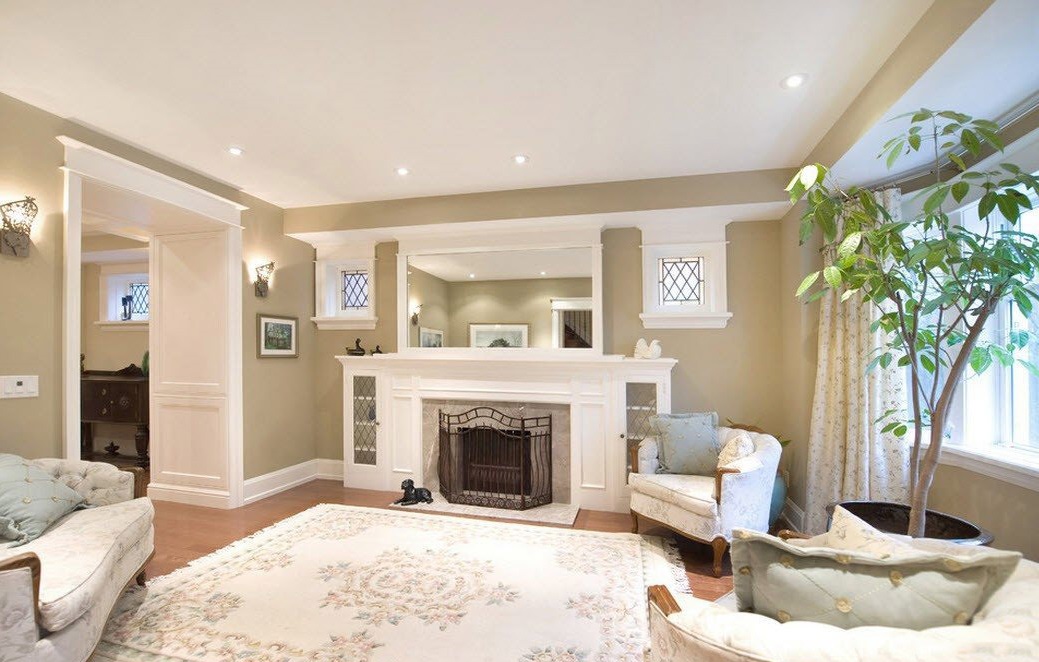
The most important room in the house is the living room, in which the family spends their free time and hosts guests.
The pros and cons of painting walls
Content
Answering the question what color to paint the room in the apartment, you need to evaluate the positive and negative sides of the painting. Among the advantages include:
- a large selection of coloring compounds makes it possible to obtain a decor with the required properties;
- easy application and renewal;
- quick drying;
- a variety of color palettes allows to realize the idea of any design;
- using invoice means you can hide the defects of the base;
- resistance to water;
- the possibility of applying to a smooth and embossed surface;
- resistance to mechanical damage;
- simple restoration of the damaged fragment;
- the ability to combine colors and patterns.
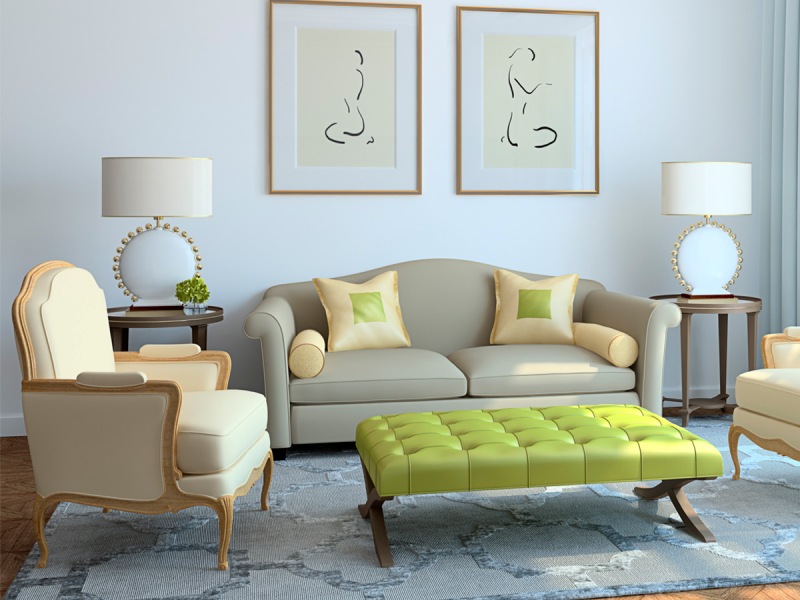
It should be designed in such a way that it was warm and cozy.
Another significant plus is getting the right tone from any color of paint by mixing it with color. For example, if painting the walls gave a too dark or light shade, then you can achieve the desired result by adding the desired component.
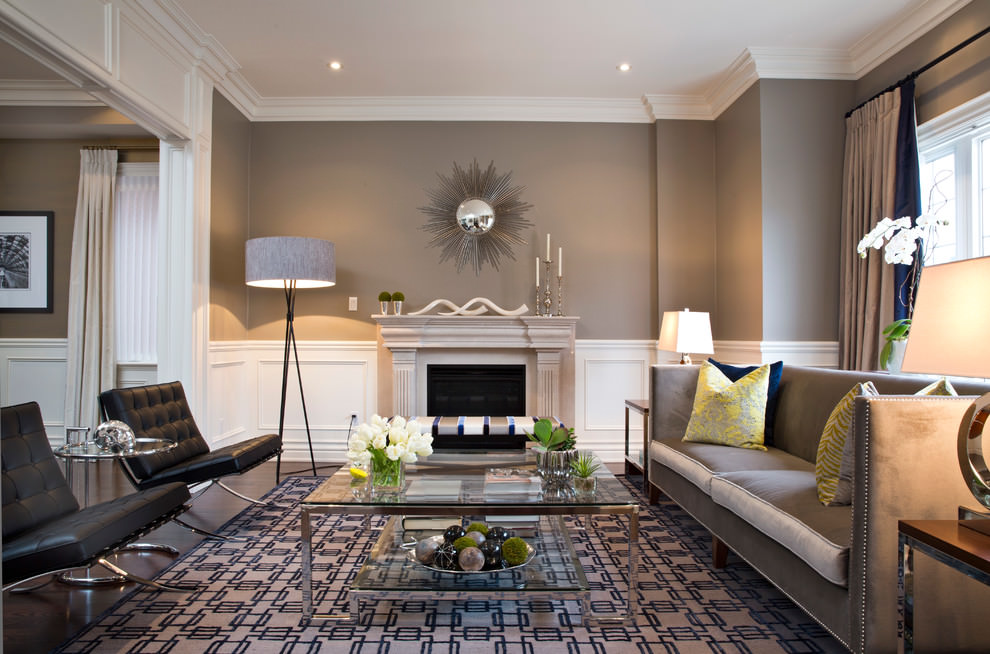
The first thing that catches your eye when entering the room is the walls.
Despite the many advantages inherent in painted walls in the living room, there are also disadvantages:
- not suitable for application to walls with significant defects (cracks, scratches, dents and other irregularities);
- spots and dirt are clearly visible on the painted surface (untimely cleaning can lead to a reaction between the dirty stain and the paint, which changes the color of the soiled surface area);
- in the presence of temperature and wet changes, the paint begins to peel off over time, giving the room an unattractive appearance.
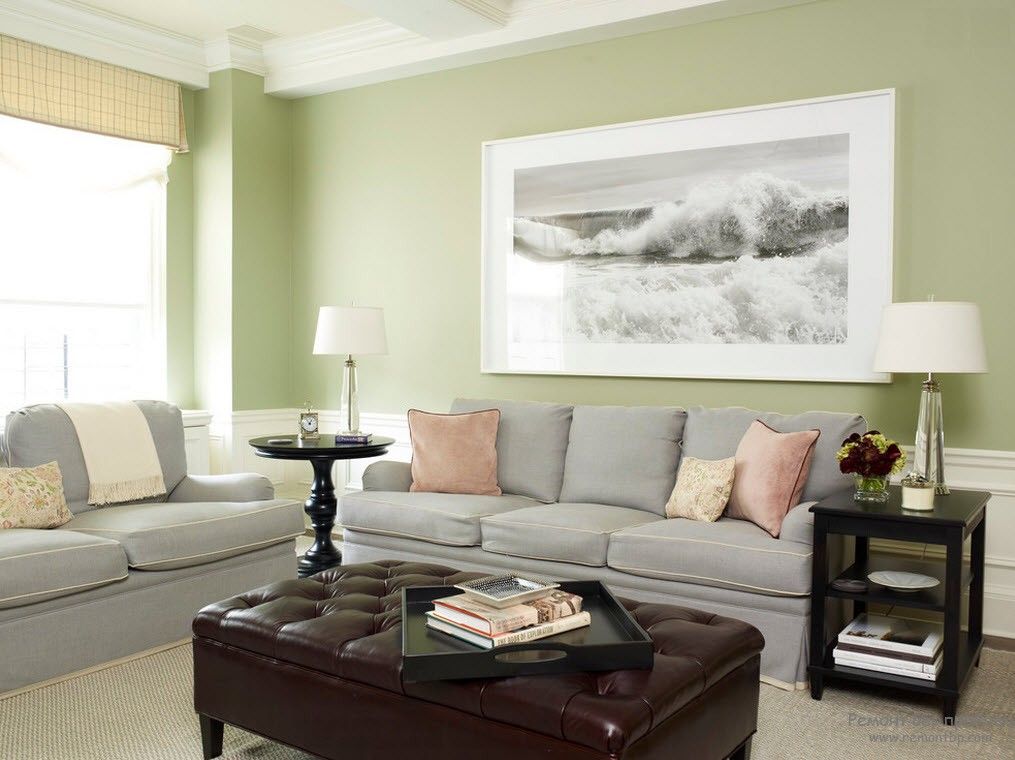
It is the walls that determine the future design of the room, its mood and style.
For reference! The paint is least prone to fading, it does not turn yellow and does not lose brightness over time.
Features when painting various wall materials
A wide range of paints and varnishes allows the hall to paint walls from different materials. However, each of them has certain application features.
Concrete
Concrete surface painting is the simplest and most affordable option for decorating a wall from this material. Before painting, concrete is thoroughly washed with dust and dirt. This is necessary because contamination reduces the life of the paintwork. Well cleans the surface of the soap solution using a rough brush or rags.
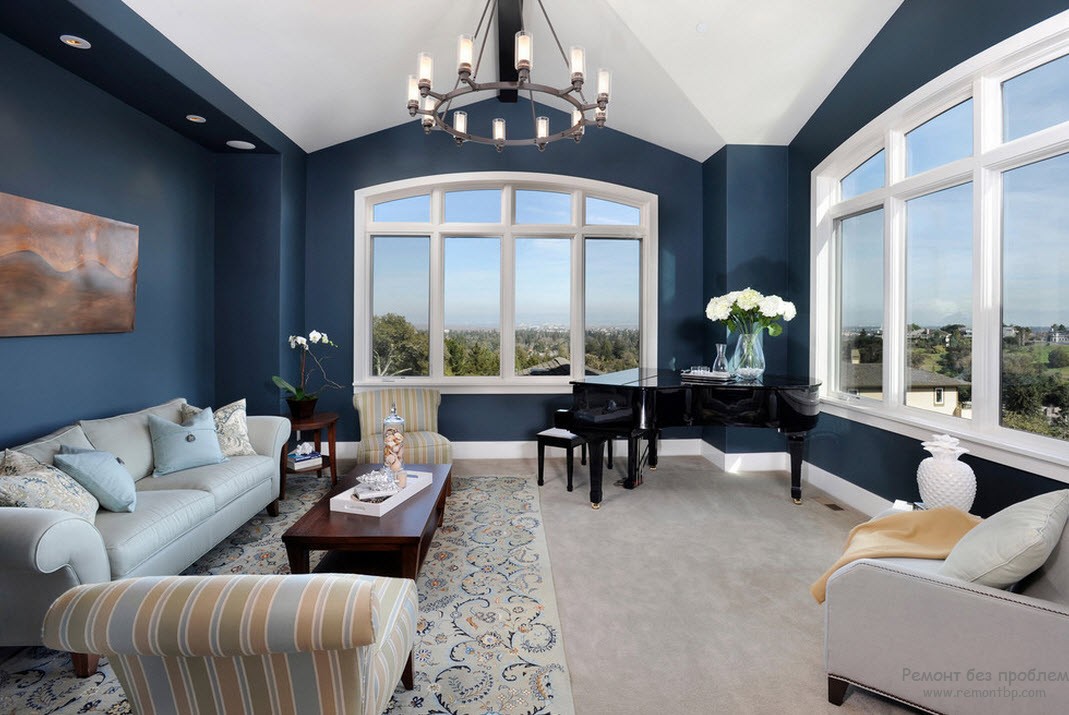
It is important to choose the right finishing method and color scheme.
If there is rust, it should also be removed using a solution of copper sulfate. The final stage is the sealing of cracks and cracks with putty. It is important that the concrete surface is completely dry before painting after using sealant and primer.
Tree
Decorative decoration of wooden walls involves the use of many types of paints and varnishes, since most of them fit well on wood. Preference should be given to those colors that allow the tree to breathe. Most suitable are non-toxic acrylic paints based on water and acrylate resins, as well as a water based emulsion. It is steamproof, does not clog the pores of a log made of wood.
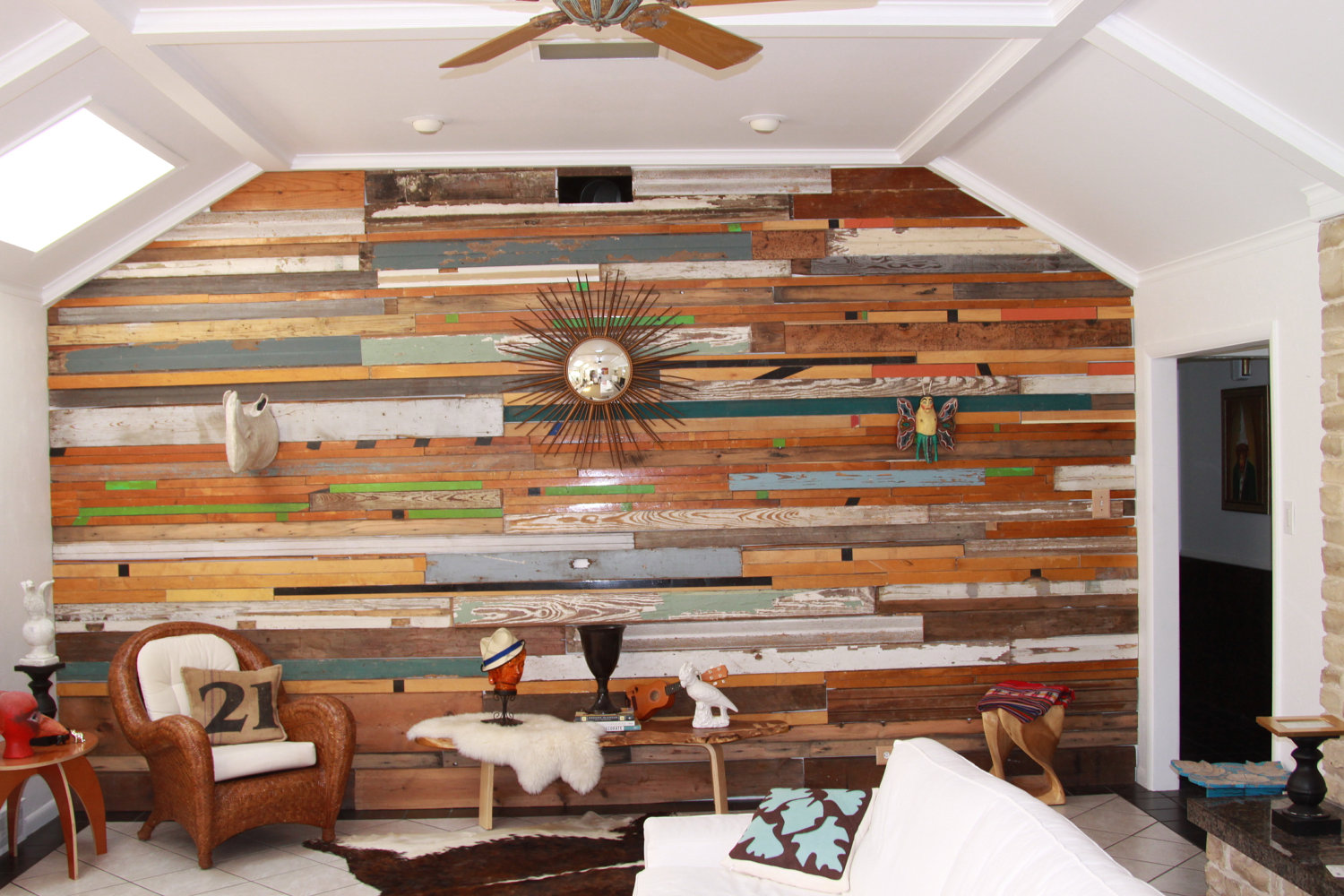
Often, residents of a house want to make the living room special, so they resort to ways to change its functionality.
Important! The internal painting of a house or apartment should be carried out with environmentally friendly and healthy compositions.
Brick
Most often, a brick wall is painted a few months after the construction. Working with fresh masonry can lead to the formation of defects. The peculiarity of the material is that its uneven surface and porous structure do not allow easy removal of the old coating.
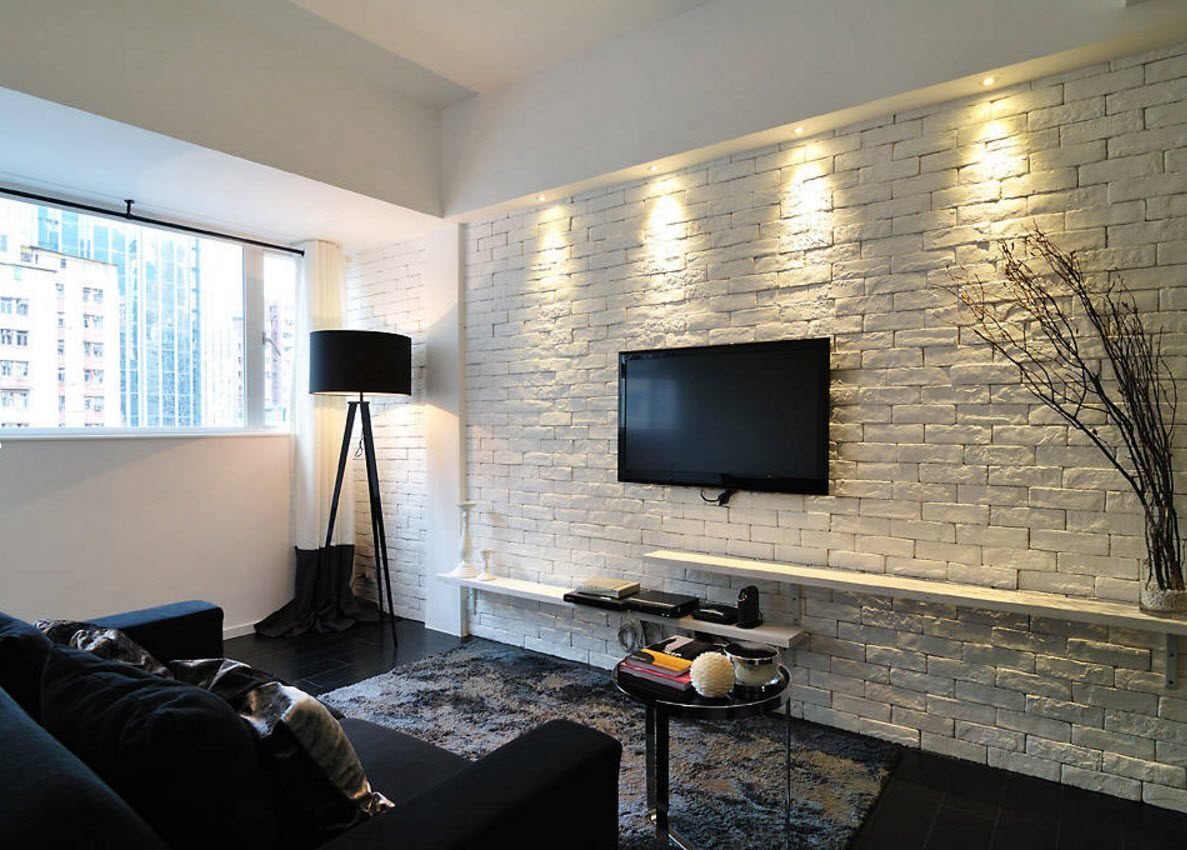
Having designed each zone in a specific color scheme, you can visually divide the space, and at the same time not create physical obstacles.
Over time, the base hue changes its original color. The best option for bricks is silicone based paint. Despite the high cost, it does not interfere with air circulation and hides small defects.
Before starting work, the brick is cleaned and washed with water. A few days later (at least 7) after the release of all moisture, the primer and surface painting begin.
Wallpaper
Paints and varnishes for wallpaper are divided into three groups: acrylic, water-based and latex. Any kind of paint is suitable for paper wallpapers, acrylic for vinyl. Latex composition fits well on non-woven and cullet walls.
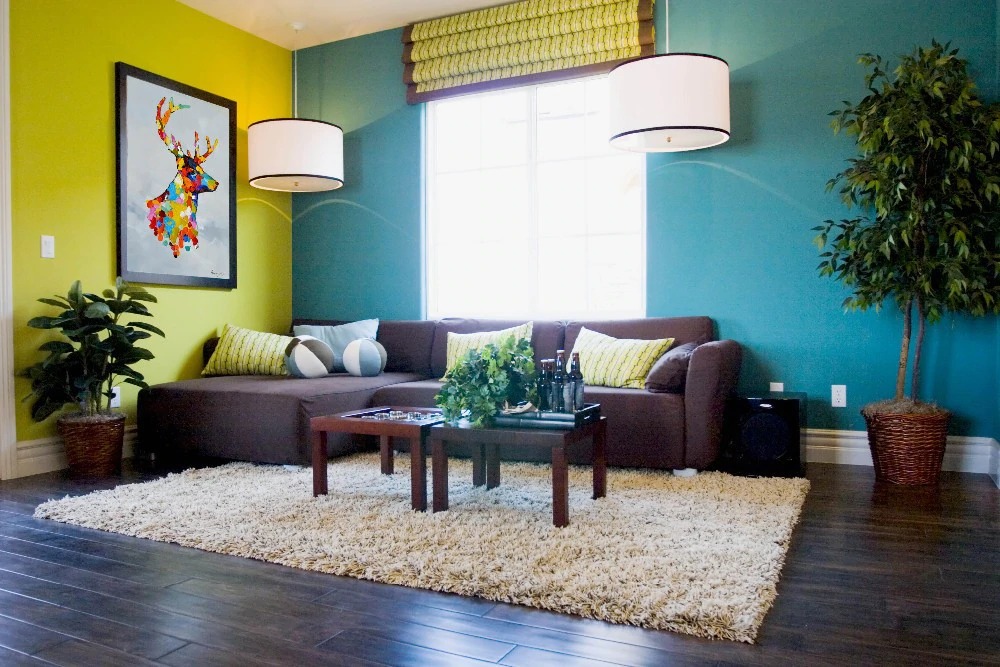
Painting the walls in the interior makes the room not only attractive, but also creative with a wide range of decorative techniques.
The options for painting the wallpaper for the room in two colors can be evaluated in different photos. Among them: highlighting only one wall with a different color, horizontal and vertical separation, inserts, art stripes, geometry, alternating gradient tones.
For reference! Any type of wallpaper can be repainted no more than 10 times.
Plaster
For plastered walls, epoxy and polyurethane paints that do not require special preparation of walls are an excellent solution. They protect the surface well, better fix the plaster. The best option is emulsion paint. Its pigment penetrates well into the pores of the finishing layer, firmly fixing.
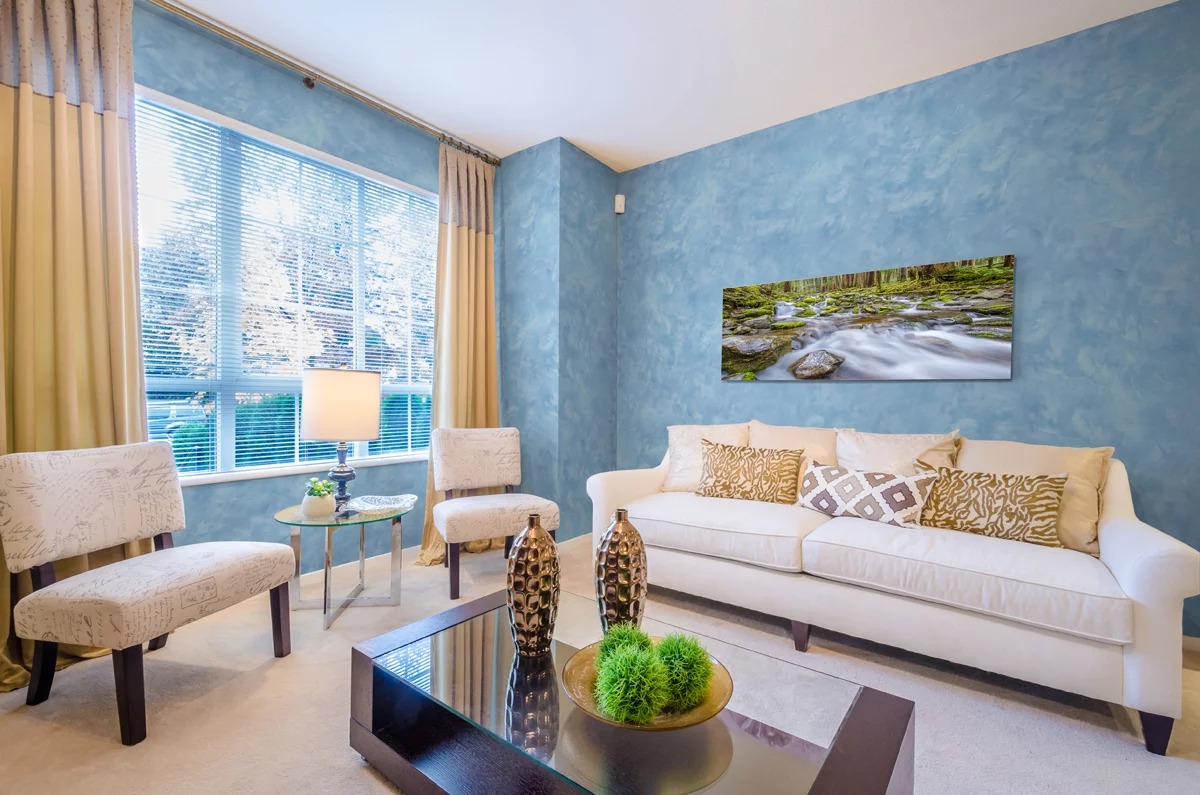
The ideas of wall decoration are not limited to monophonic painting, structural paint and other options of the original decor will create a beautiful interior.
Drywall
It is painted after puttying joints and the entire area of the material, grinding and priming. More often use silicone or acrylic paint. They are plastic and create a special protective film.
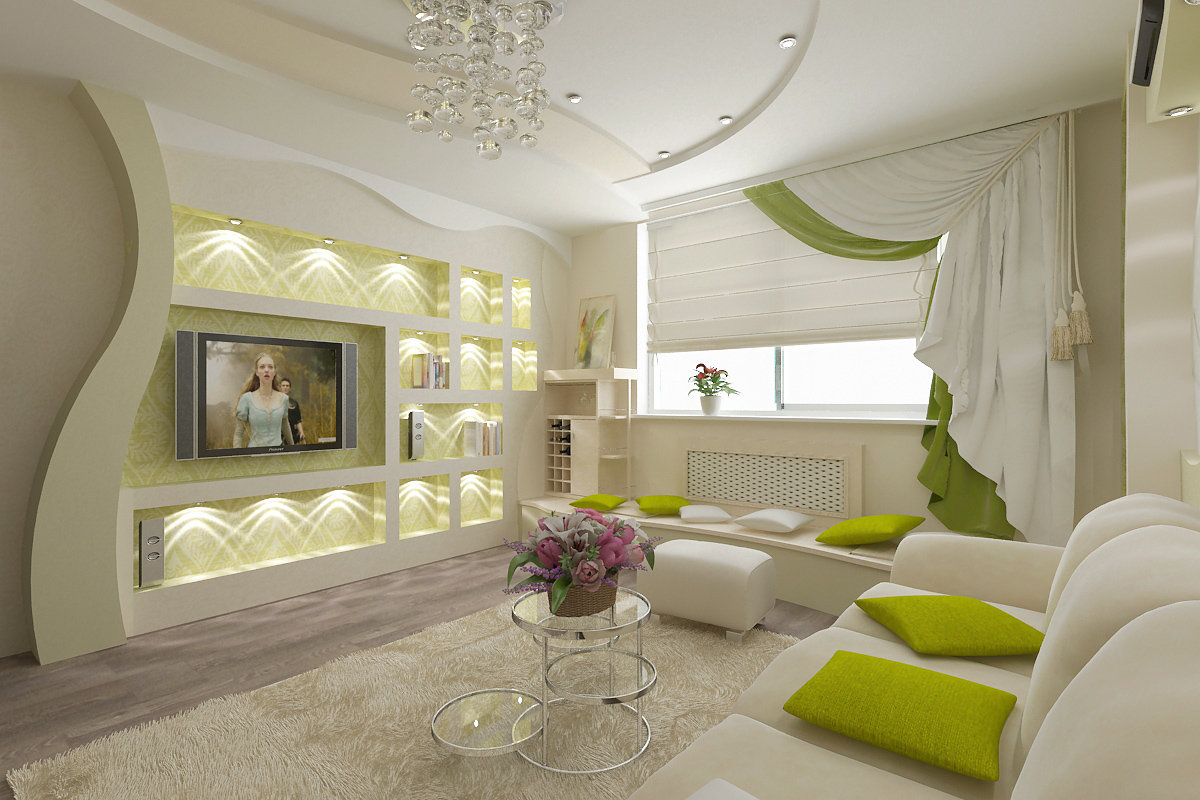
In the interior, 2-3 types of wall decoration are often used in order to diversify the design.
Color options for walls
The color scheme of the living room plays a key role in the design of its interior. The entire palette of shades is divided into several tones. The color of the walls in the room should be matched to the color of the furniture.
Cold shades
The hall is decorated in blue, blue, purple, gray, turquoise, silver and white colors. Such colors visually expand the space, increase concentration and improve mood. Cold shades fill the room with freshness, elegance and chic. Colors are relevant if the windows face the sunny side.
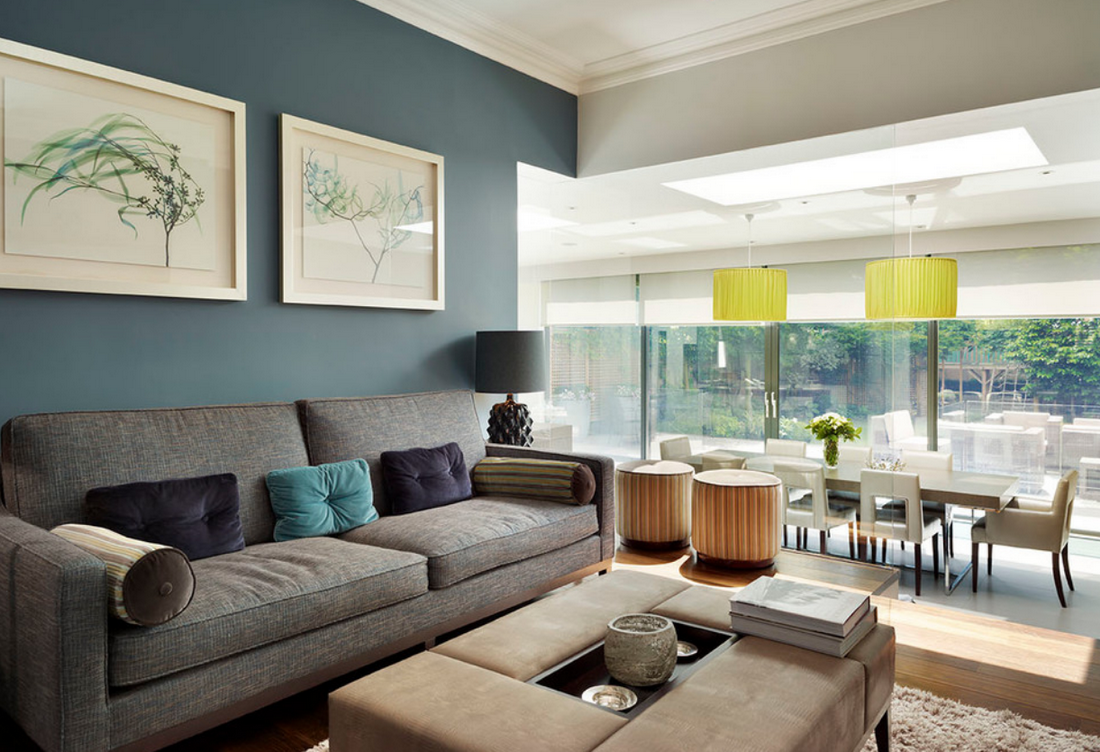
Solid walls are chosen for discreet interiors, such walls serve as a neutral canvas for expressing style in furniture, accessories.
Warm shades
Warm colors visually reduce the area of the living room, create a feeling of comfort and coziness. These shades include: red, pink, yellow, orange, beige, burgundy, peach, green and coffee (brown) colors. Bright colors give energy, vitality and optimism.
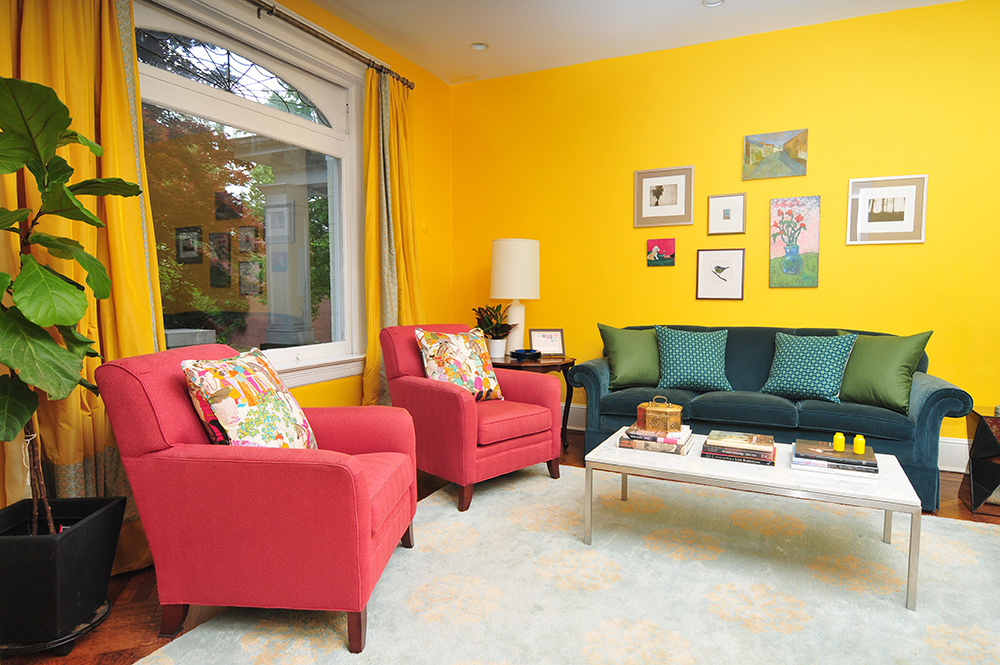
Yellow for a sunny interior or rooms with poor lighting, combined with orange, green, white.
Neutral shades
Neutral colors are a classic room decoration. Such a design is interesting, gives originality and freshness. Against the background of neutral shades, the rest of the interior looks sharper and brighter. Traditional colors are white and black.
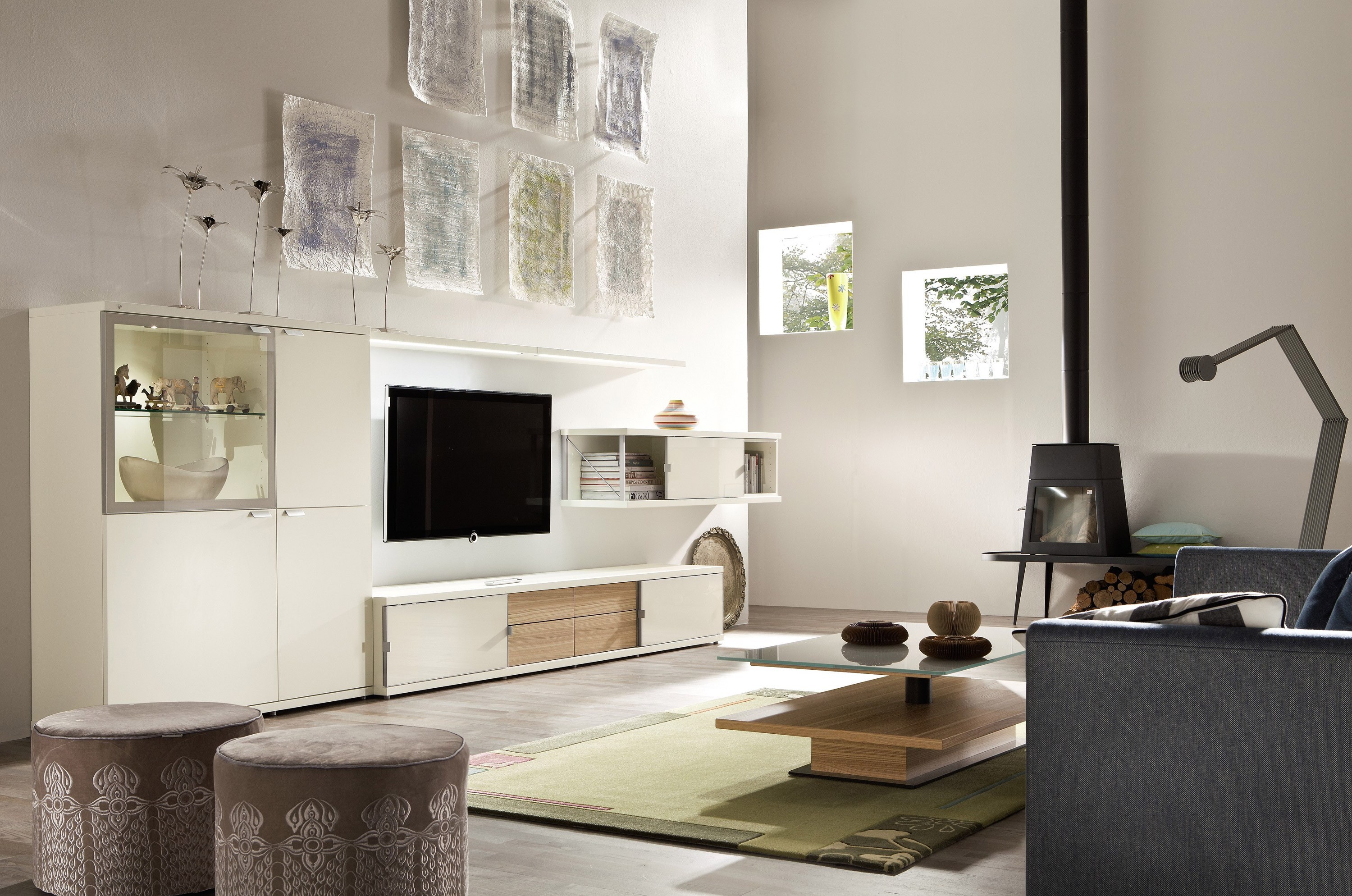
White is often used independently in Scandinavian and other modern interiors, and is also a companion for bright, warm and cold colors.
Two color options
The main task is to select harmoniously matching shades. The combination of colors depends on what result you want to get: ombre effect or contrast effect. In the first case, it is necessary to combine consonant tones that seamlessly replace each other. For example, gray and cream, peach and sand, turquoise with tender mint. In the second option, bright colors are relevant, significantly different from each other. Paired contrasting colors: purple with yellow, red with green, blue with orange.
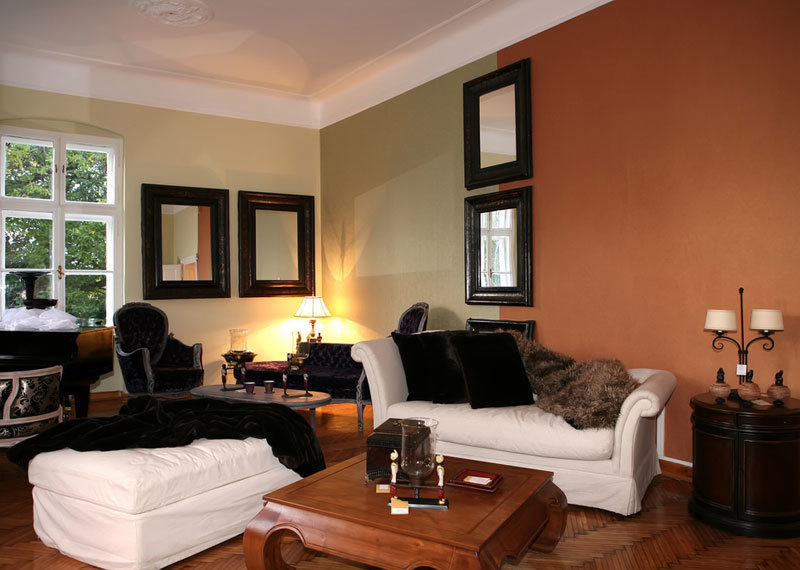
Painting with several colors in one gamut or a combination of contrasting colors will become an independent decor in the interior.
The walls decorated in different colors in the living room are relevant for zoning the room. If the apartment is small, in the hall there is a relaxation area and a sleeping area. If there are children, a children's corner is made out in traditional shades for a boy, girl or based on the preferences of a teenager.
For reference! You can choose compatible and contrasting colors according to the color wheel, following certain rules.
Hall Style Colors
A wide variety of styles allows you to realize the most interesting design ideas. To know what color to paint the walls in the hall, you need to carefully study the characteristic features inherent in each of the styles.
Baroque
Baroque in the living room emphasize contrasting combinations. A characteristic combination of colors - gold with white. White can be replaced with pastel shades (sand, peach, beige). The aristocratic style involves the use of dark green, red-burgundy, blue-green, terracotta and chocolate shades. Plain wall decoration is not allowed.
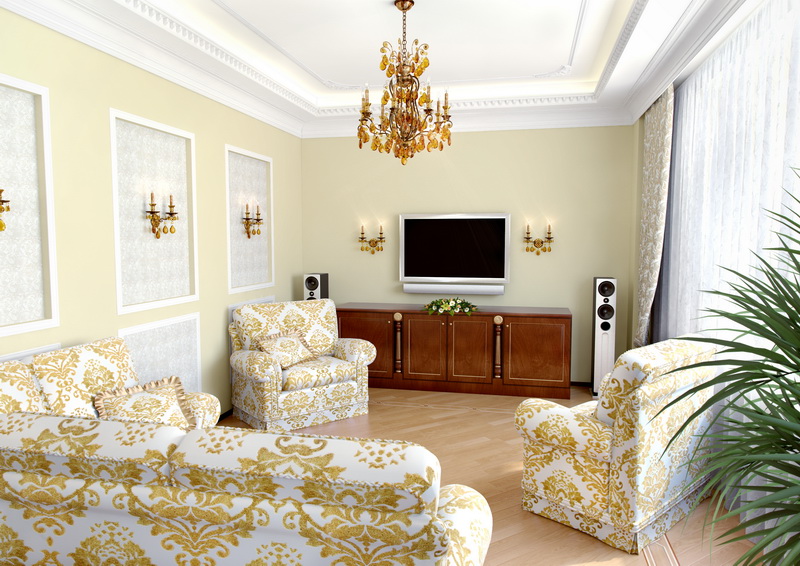
Baroque is intended for the stylistic design of large living rooms.
Art Deco
The color basis of the style is calm colors: chocolate, beige, gray, silver, black and white. Preferred preference for dark shades. Variegation and brightness are unacceptable.
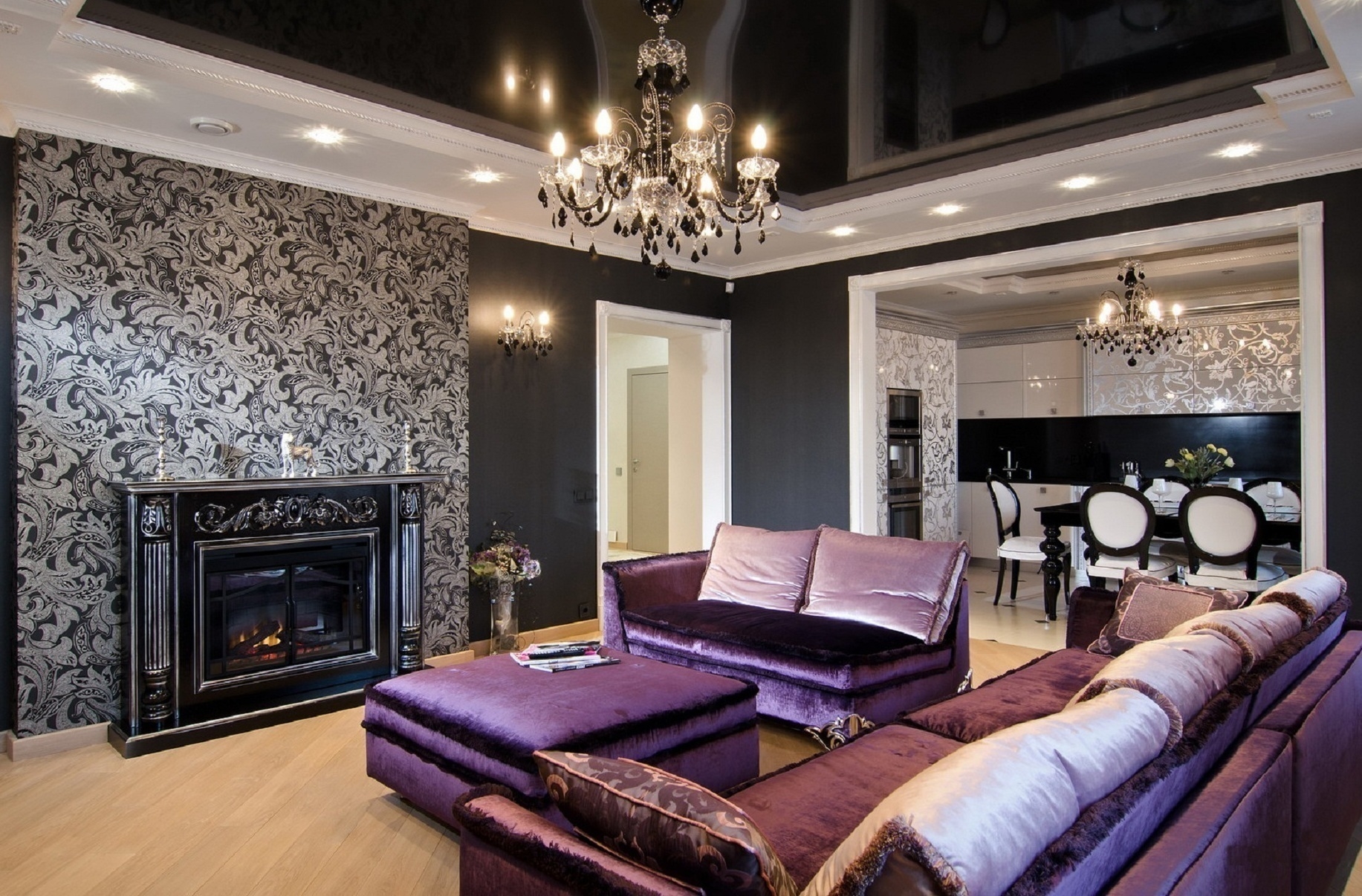
Saturated shades can reduce the room, and light, on the contrary, expand.
Classical
The dominant position is occupied by pastel cream tones: olive, terracotta, beige, sand and coffee shades. The main light colors are complemented by elements of white, pink, blue, blue-green colors.
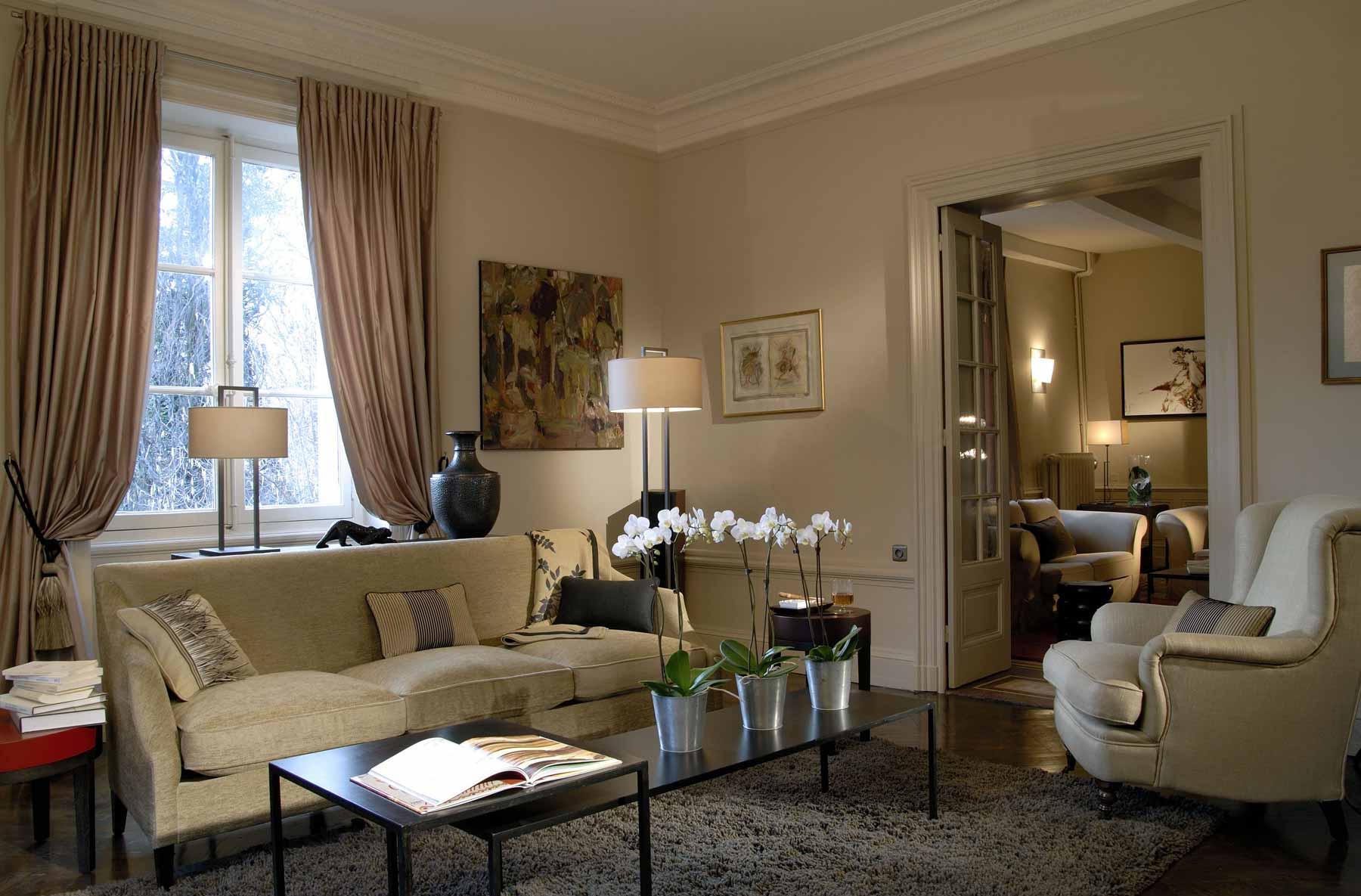
Most often, for the design of the guest space, they use a modern classic style that appreciates naturalness.
Provence
The interior of the Provence hall is dominated by light colors. The most popular are light blue, lavender, muted yellow, pale shades of green or beige.
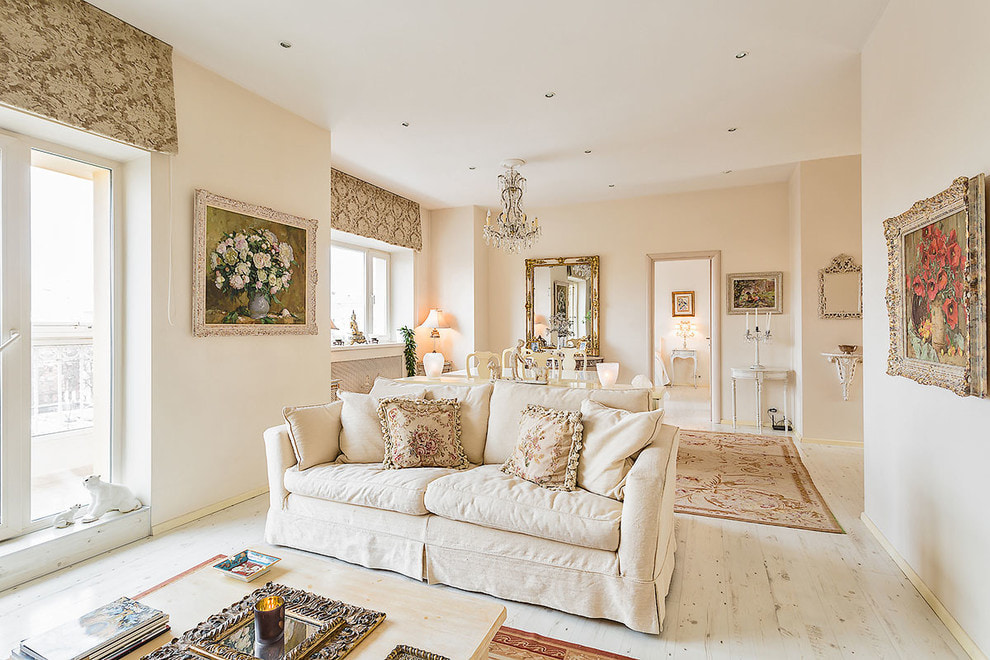
For him, you can choose the delicate shades of pink or beige, which will help dilute the aged furniture.
Modern
Modernism is characterized by contrast and neutral shades. Preference is given to the natural colors of nature (green, all shades of brown, pearl, wet asphalt, black). Metal colors (silver, gold, bronze) are also welcome. For contrast, fuchsia, yellow, red (should be a bit) are suitable.
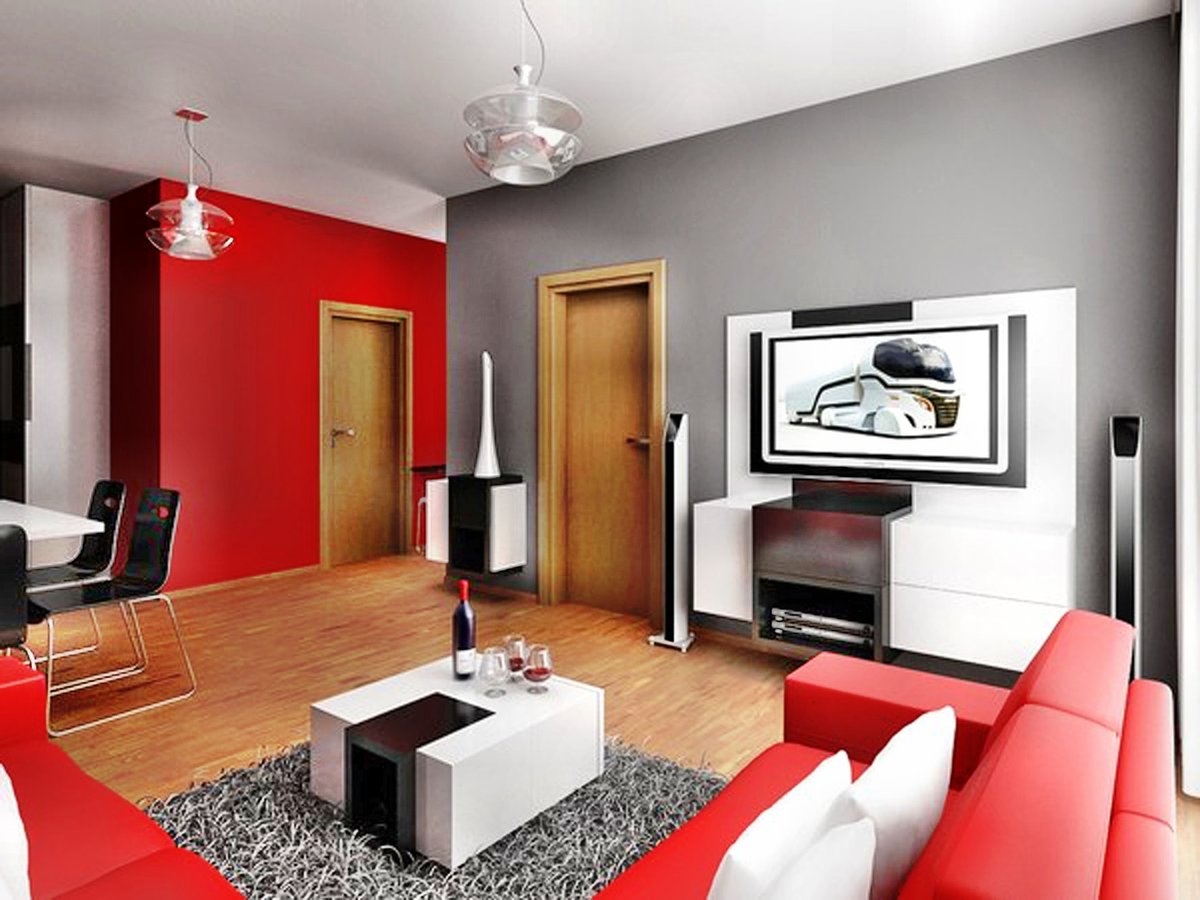
Its decor combines the uniformity of wall surfaces with bright accents.
For reference! Art Nouveau walls should create only the background, but not focus on themselves.
Victorian
A combination of materialism and pragmatism is characteristic. Therefore, a combination of soft beige and brown, a coffee shade with a noble burgundy is relevant.
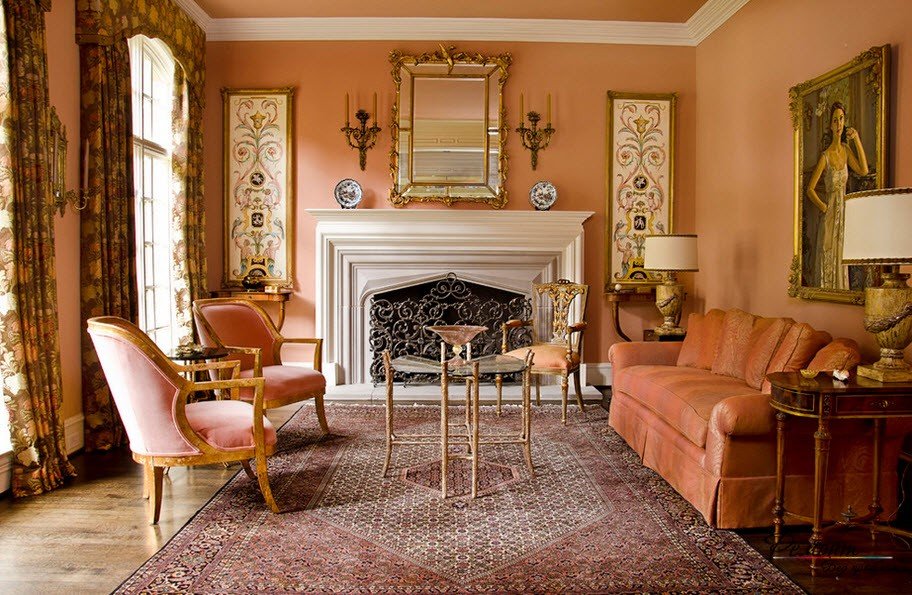
As decorations, paintings in massive wooden frames, stucco molding and bronze decor elements are welcome.
Country
When choosing a palette of colors, you need to consider some recommendations: mainly natural pastel shades (milk, light tones of green, lilac). Too bright, chrome and neon colors are not used.
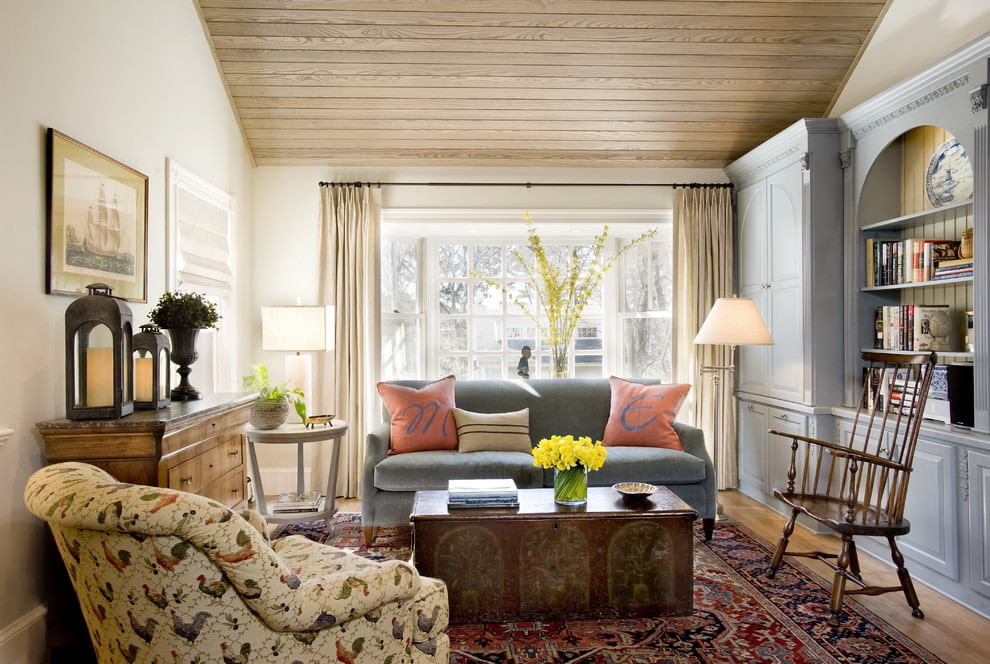
If country was chosen as the style of the living room, then the design of wall coverings should consist of natural shades.
High tech
The traditional color palette is beige, black, white, gray and all shades of metal. More often, walls are decorated with silver. If bright colors are used, then they should be in small quantities.
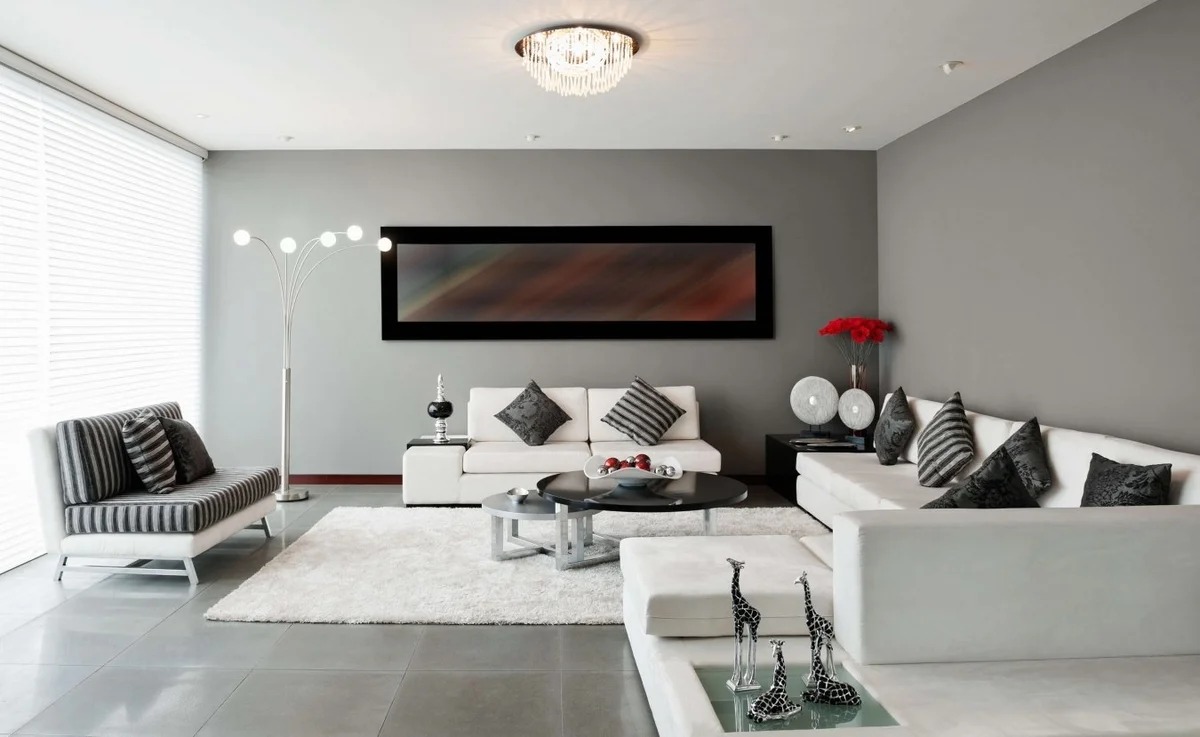
Metallic gloss, accent textiles and silver jewelry help complement the style.
Renaissance
Allowed to use any color, but subject to their correct combination. There should be no bright contrast and sharp color transitions. The standard tones of the style include red, black, burgundy, brown.
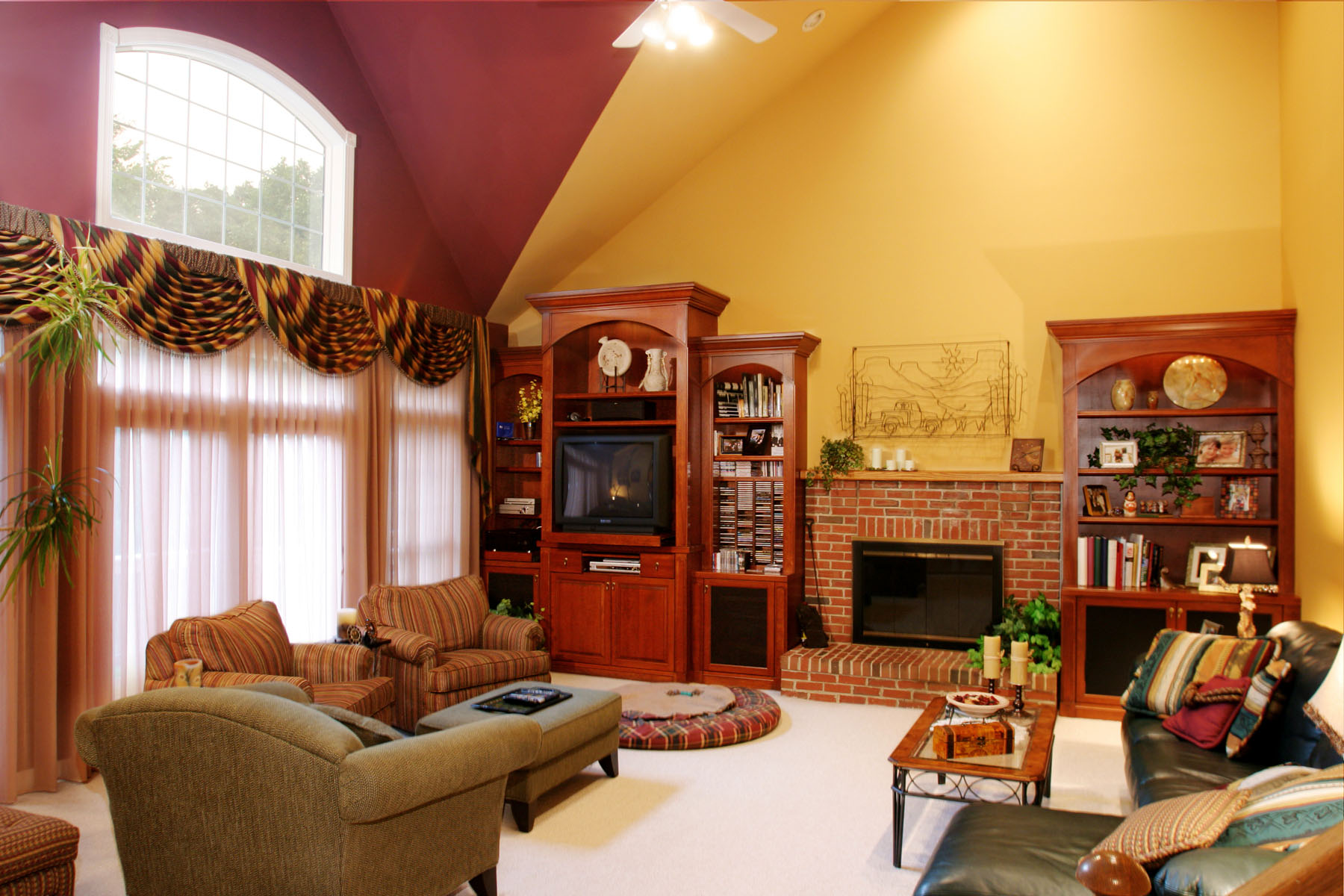
The color scheme of the walls allows you to visually adjust the parameters of the living room.
Types of paints for room design
When deciding on what color to paint the walls in the living room, you need to focus not only on shades, but also on the composition and performance. Types of coatings:
- Alkyd. They are universal in use, they are matte, semi-gloss and glossy. The main component is alkyd varnish, mixed with various fillers and solvent. Advantages include: long service life, quick drying, compatibility with the surface of any material.
- Textured. Thick viscous mass of high density. The basis is made up of polymer and acrylic elements. Often add substances that form a relief surface (marble or granite chips, quartz sand, polymer fibers). Feature of the paint is environmental friendliness, ease of application, lack of ability to absorb odors.
- Emulsion. This is an emulsion obtained from water, pigments and small particles of polymers. The composition is easy to colorize, protects against excessive moisture and ultraviolet radiation. There are several types of this type of paint: silicone, latex, acrylic, water-based, water-dispersed, polyvinyl acetate.
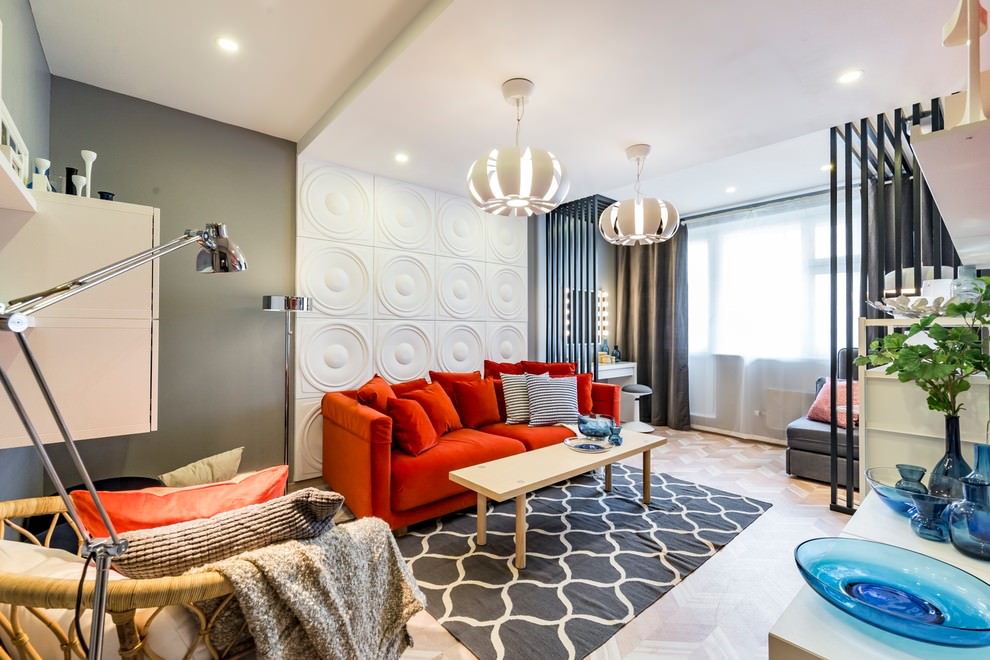
Before painting the walls, you need to check and make sure that the selected colors will well emphasize the interior of the hall.
What paint is best for the walls in the room, you need to decide only on the basis of personal preferences. The type of paint is selected based on the budget, design of the room and the functionality of the room.
Conclusion
The decoration of the walls in the hall is not limited to monophonic painting. Using structural paint and other options for the original decor, you can recreate the beautiful interior of the living room. The design is made using stencils, painting with different colors, highlighting stripes, squares, other patterns, stains and ornaments.
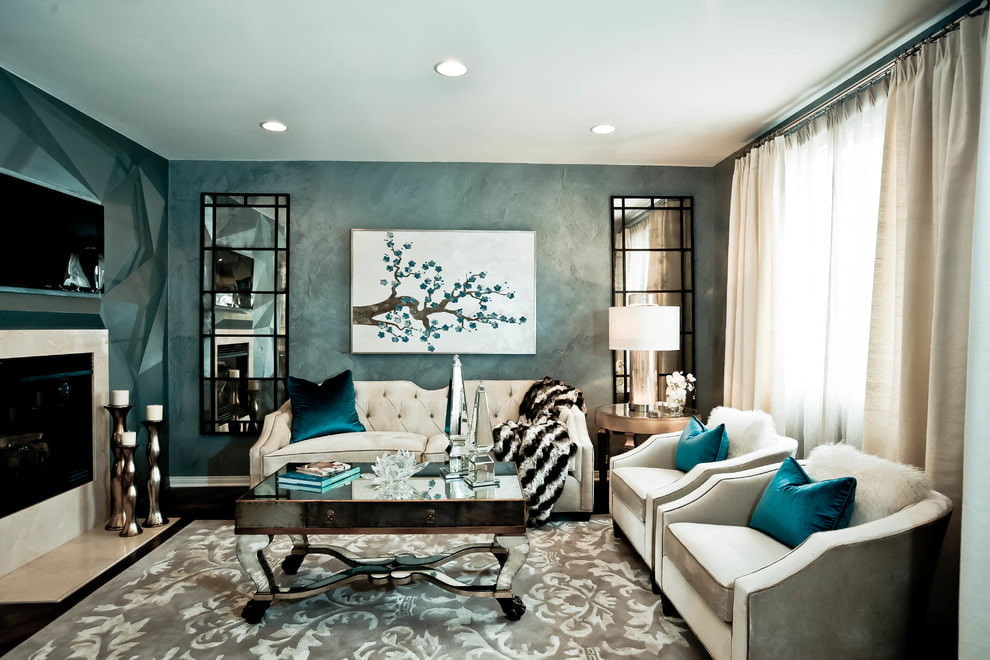
It is necessary to think over the design of the room in advance and take into account the color scheme of all its components.
VIDEO: Variants of unusual painting of walls in an apartment.
